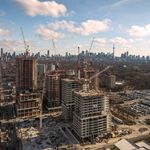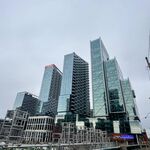When it comes to commuting, Californians are a lot like other Americans - they like to go it alone.
About 73 percent of Californians drove solo to their jobs, a 2009-'11 census survey found, slightly fewer than Americans as a whole. Californians were a bit more likely to carpool and to take public transit than the national average, but both figures were dwarfed by the number of lone drivers, the American Community Survey showed.
One explanation for persistently high rates of solo drivers, said Donald Shoup, a professor of urban planning at UCLA, is free parking.
"If you can park free at work, it's an invitation to drive to work alone. And almost everybody who does drive to work has this invitation," he said.
Cash instead
Shoup's research led to a 1992 state law that requires employers to offer workers cash in lieu of a parking space. The idea behind the cash-out program is that by allowing employees to cash out their subsidized parking spots and walk, ride a bike, take public transit or carpool to work instead, there would be fewer cars on the road and fewer emissions in the air.
A study Shoup conducted 15 years ago for the state Air Resources Board found that employers who offered cash-out programs saw solo driving to work drop by 17 percent, carpooling increase by 64 percent, walking and biking grow by 33 percent, and transit ridership jump by 50 percent.
The cash-out program, however, is not well known and not widely used, Shoup said.
Missed chance
"California has missed an opportunity to take advantage of this law," he said. "If you offer parking cash-out, it would really turn things upside down. Parking, which used to be free, now has an opportunity cost. They could get cash, so now you think, 'Well gee, maybe I should think about transit.' "
Women and minorities would be the biggest beneficiaries of cash-out programs, because they're less likely to drive alone and more likely to take public transit to work, Shoup said. The American Community Survey showed that about 55 percent of solo drivers to work in California were men and about 45 percent were women. About 44 percent of public transit riders were Latino.
One challenge for advocates of alternatives to driving, however, is the time it takes to get to work without a car.
Californians who refrain from driving to work alone typically have longer commutes. On average, solo drivers spent 25 1/2 minutes getting to work, the census survey showed. Carpoolers took just over half an hour to get to their jobs, and public transit riders commuted nearly 47 minutes to work.
Dubious honor
The longest commute times in the state belonged to residents of Contra Costa County, who spent an average of 32.2 minutes traveling to work. In the county, 7 in 10 drove alone, 11.8 percent carpooled and 8.8 percent took public transit.
Contra Costa, along with Riverside County, had the highest proportion of its residents traveling an hour or more to work: 17 percent.
San Francisco residents were the least likely in the state to commute by driving alone, with 37.5 percent who did. One in 5 reported having no vehicles available to them, a much higher rate than the statewide average of 3.6 percent.
San Franciscans were also the most likely to take public transit, with nearly one-third using buses, subways, trains or ferries to get to work.
For public transit riders in San Francisco, the average commute was 37.3 minutes - about 10 minutes longer than for carpoolers or solo drivers.
By contrast, in Los Angeles County, the 7.2 percent of residents who rode public transit to work commuted an average of nearly 48 minutes. Driving alone to work took Los Angeles residents an average of 27.4 minutes.
Read more:
http://www.sfgate.com/news/article/...es-solo-driver-rate-4006497.php#ixzz2BUZBExIg





